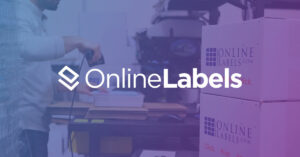How to Set Expectations on Your Site
By Ruby Brown
October 8, 2020
Share
There are many factors that influence user behavior on a site, but one virtually universal way to help visitors find what they need and improve conversions is to clearly and accurately set customer expectations. This sounds simple enough, but can actually prove tricky. There are a few common places in the customer journey where expectations can get misaligned, but there are a few tactics to take that will help you lift conversions.
Buy Now, Add to Cart, Checkout, And More
For retail sites, the “Add to Cart” button seems like a pretty simple feature. But especially now, when many brands are offering additional options such as in-store pickup, free shipping, or curbside pickup, there can be a lot of nuance in that innocuous CTA. Whether you use “Buy Now,” “Add to Cart,” “Ship,” or “Pick Up In Store,” can make a big difference in conversions. For most brands, the deciding factor for success is how well the CTA reflects the customer’s expectations as well as the resulting experience.
For example, our client Webroot — a cloud-based AI platform providing cyber security solutions for both consumers and business users — A/B tested the difference between a “Buy Now” button and an “Add to Cart” button. The original, a “Buy Now” button, took users to their cart where they could then proceed to buy. When they changed the copy to “Add to Cart” conversions spiked. “Buy Now” suggests an immediate purchase, where “Add to Cart” better reflects what will actually happen. By aligning their messaging with customer’s expectations, Webroot was able to significantly improve the customer experience.
This idea doesn’t just apply to ecommerce, as any website can benefit from fine-tuning their CTAs to align with customer expectations. For example, does an “Enroll” CTA lead directly to a form to enroll, or to information about enrollment? Does “Talk to a Rep” lead to a chat feature, or is it actually a scheduling tool? Aligning your CTAs with customer intent and expectations will help you create a better user experience.
Beyond Calls to Action
Setting customer expectations doesn’t just apply to your calls to action, but every step of the customer journey. For example, if you have a form on your site, what happens after a user fills it out? Clarifying if they should expect immediate access to your product, a follow-up phone call, or to be put on a mailing list is a large factor in not only getting more leads, but more qualified leads. Next time you look to optimize part of your site, consider the way your experience aligns with customer expectations to see a bigger conversion impact.
Share
Suggested Posts
Subscribe to our blog:





